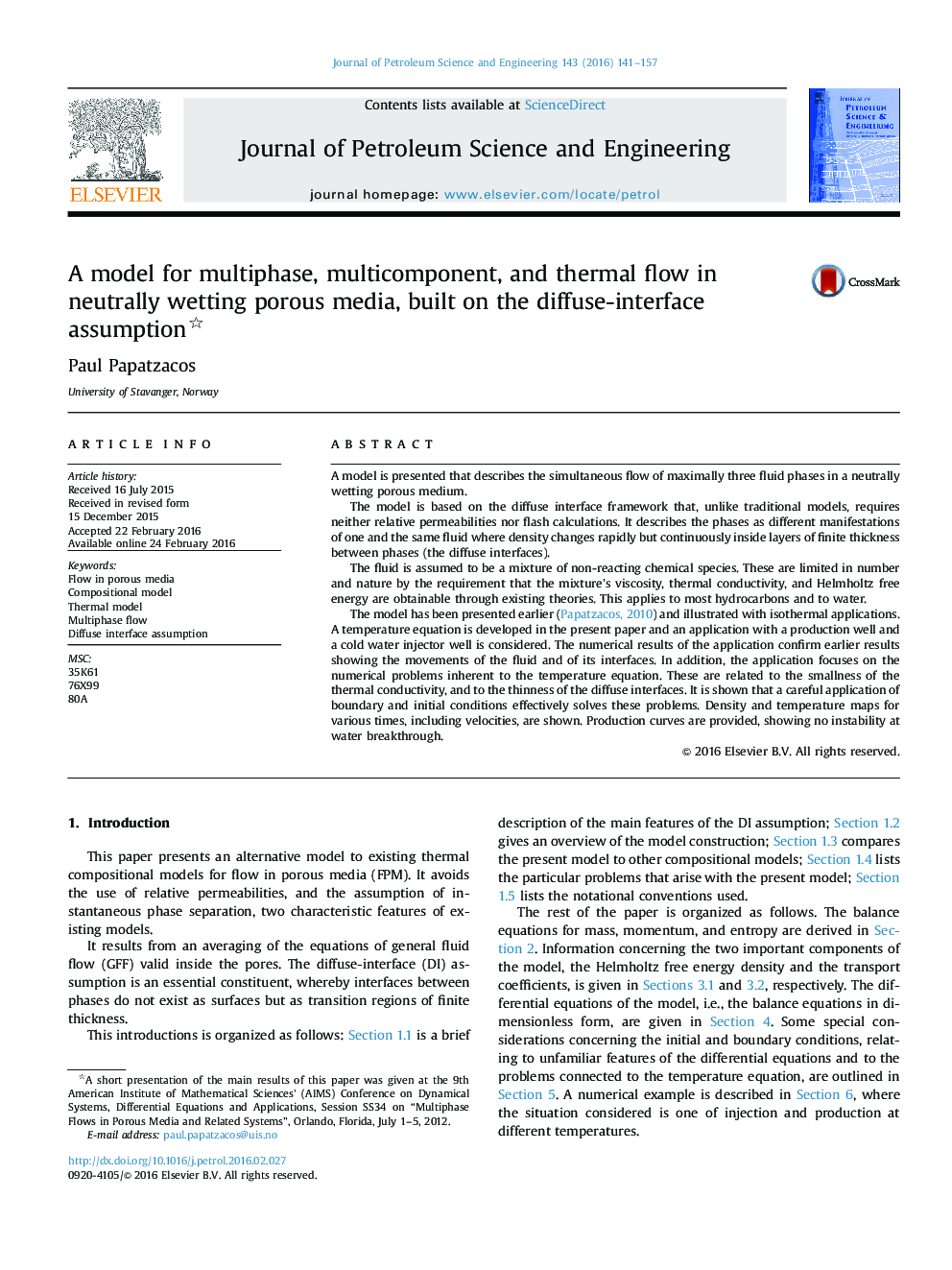| کد مقاله | کد نشریه | سال انتشار | مقاله انگلیسی | نسخه تمام متن |
|---|---|---|---|---|
| 1754577 | 1522798 | 2016 | 17 صفحه PDF | دانلود رایگان |
• Description of the diffuse interface assumption.
• No use of relative permeabilities and flash calculations.
• Differential equations in dimensional and dimensionless forms.
• An application with a three-phase reservoir, a producer and a cold water injector.
• Water coning without instabilities.
A model is presented that describes the simultaneous flow of maximally three fluid phases in a neutrally wetting porous medium.The model is based on the diffuse interface framework that, unlike traditional models, requires neither relative permeabilities nor flash calculations. It describes the phases as different manifestations of one and the same fluid where density changes rapidly but continuously inside layers of finite thickness between phases (the diffuse interfaces).The fluid is assumed to be a mixture of non-reacting chemical species. These are limited in number and nature by the requirement that the mixture's viscosity, thermal conductivity, and Helmholtz free energy are obtainable through existing theories. This applies to most hydrocarbons and to water.The model has been presented earlier (Papatzacos, 2010) and illustrated with isothermal applications. A temperature equation is developed in the present paper and an application with a production well and a cold water injector well is considered. The numerical results of the application confirm earlier results showing the movements of the fluid and of its interfaces. In addition, the application focuses on the numerical problems inherent to the temperature equation. These are related to the smallness of the thermal conductivity, and to the thinness of the diffuse interfaces. It is shown that a careful application of boundary and initial conditions effectively solves these problems. Density and temperature maps for various times, including velocities, are shown. Production curves are provided, showing no instability at water breakthrough.
Journal: Journal of Petroleum Science and Engineering - Volume 143, July 2016, Pages 141–157
